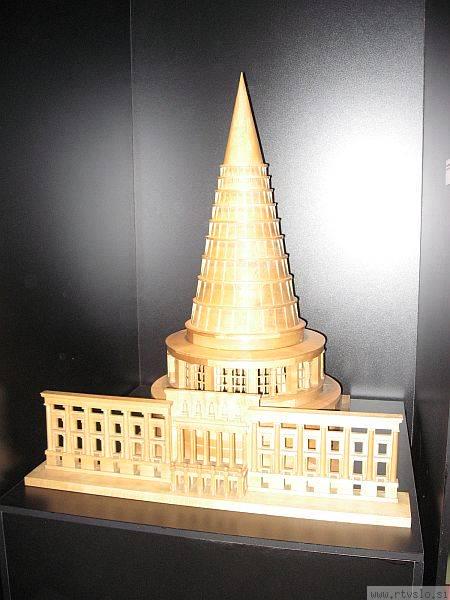
Jože Plečnik is one of Slovenia’s most beloved icons. Thousands of visitors flock to Ljubljana and other places in Slovenia to admire his unique, often whimsical style of architecture. Of Plečnik’s most daring and original projects, however, is also one of the few that were never realized. If built, it would have rivaled the U.S. Capitol Building in its sheer monumentality.
In the wake of World War II, the new government decided to build a new Slovenian parliament as a symbol of Communist rule. One of the architects who submitted plans for the building was Jože Plecnik, the dean of Slovenia’s architects.
Plečnik, born in 1872, had studied in Vienna under Otto Wagner. In the interwar period, he changed the face of Ljubljana with his unique reinterpretation of classical elements – as style that inspired several post-modernists several decades later. Plečnik also became well-known in Prague for his work on the Prague Castle.
His design of the parliament building was even more audacious than his usual designs. It featured a base with Plečnik’s typically modern reinterpretation of classical columns. However, Plečnik chose to top the building with a huge conical dome rising 120 meters (almost 400 feet) into the air – higher than the U.S. Capitol or the Statue of Liberty. One of Plečnik’s plans would have located the parliament – which he dubbed the Cathedral of Freedom – in Ljubljana’s Tivoli Park. In an earlier proposal, Plečnik had even advocated tearing down the centuries-old Ljubljana Castle to make room for the new parliament.
However, the new regime was increasingly skeptical of Plečnik, who was deeply religious and an admirer of classical – rather than socialist – architecture. Another design for the new parliament was chosen, and Plečnik’s design remained an unrealized proposal.
Still, the Cathedral of Freedom survived in the consciousness of the Slovenian people. When the country became independent, Plečnik’s design was featured prominently as a symbol of Slovenian nationhood. Tellingly, the Cathedral of Freedom graced the first-ever postage stamp issued in independent Slovenia back in 1991 – and the first Slovenian euro coins almost two decades later.


































































